Home > Best CPUs > Overclocking 101
What Is Computer Overclocking & Should You Overclock Your Gaming PC? (Pros & Cons)
How Modern Computer Overclocking Works & Which PC Parts You Can Overclock
What is computer overclocking? To some the term overclocking may conjure some sort of overly-dramatic visualization of a crazed, long-haired, large-spectacle-wearing hippy-genius in a high-tech lab somewhere pouring liquid nitrogen on hardware like some sort of PC god. However, the reality is overclocking is a lot more common, accessible and easy to do these days and you don’t need to be a genius in the slightest thanks to easy to use (and free) software and tools being available for overclocking your parts.
See Also:
Plus, the risks associated with overclocking are less than in the past with PC hardware these days being much more flexible and having the ability to withstand a lot more. However, despite overclocking being far from rocket science and becoming a lot closer to idiot-proof in the modern age, there are still risks associated and little nuances you need to be aware of, and so you have to decide for yourself whether the extra potential performance is worth it for your particular situation.
Overclocking is not for everyone and may not be worth the time and effort for your particular situation. Plus, it requires a bit of patience to do right because you don't want to just dive head-first and tinker with hardware settings as a noob without knowing what you're doing. If you're building your first gaming PC you should probably give overclocking a miss unless you have good reasons to do it.
It's not always the most practical thing to do, but don't get me wrong as there definitely are places for overclocking to get you more for your money and/or extend the life of an aging system. This guide will cover what overclocking is, the pros and cons to overclocking, how to choose parts for overclocking, and for those who want to go even deeper down the rabbit role we have further modules below on exactly how to overclock both your CPU and GPU using the latest methods and software tools. Strap yourself in and may the force be with you and your parts.
How Computer Overclocking Works
Computer overclocking is forcing a component such as the CPU to run at higher, faster speeds than the default (known as "stock") speed set by the manufacturer, and is done by altering settings in a software program or in your motherboard BIOS. The increase in performance you can create via overclocking will depend on various factors such as the specific hardware component model and what base performance it has, how effective your hardware cooling setup is, how much you push your part/s, and how much risk you’re comfortable with among other factors.
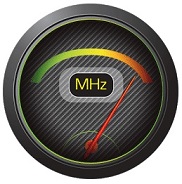
The free boost in performance that comes from an overclock isn’t free in theory, and comes with added risks to your system such as overheating, system crashes, voiding your warranties, hardware damage, lowering hardware lifespan, and even complete hardware failure. Overall, overclocking isn’t generally recommended for beginners building their first PC due to the extra complexities and potential problems it can create.
It’s only really suggested for the curious with the time and patience to do it the right way, or those looking to fully maximize performance for their money who are willing to accept the potential risks. However, as mentioned before the truth is that these days it’s a lot less risky and simpler than it was once was, and there are ways to do it quite safely that greatly limit all of the potential downsides.
For example, if you push a part beyond what it’s safely capable of, your system may simply crash or refuse to boot indicating that you need to tone the settings down a bit; and you can then reset the settings and be up and running again as normal without problems. There are also fail-safes built into modern CPUs, GPUs and motherboards that help prevent hardware damage and failures when overclocking.
Overclocking isn’t some forbidden dark art that should only be left to the experts and extreme enthusiasts; it’s quite a common practice these days among intermediate PC builders, and even with some total beginners who are keen on really stretching their system further or who are just curious about these sorts of things.
Components that can be overclocked include the CPU, GPU (graphics card), memory (RAM) and monitor (to increase the refresh rate). Overall, the CPU is the most popular part to overlock followed by the GPU. In terms of simplicity, the GPU is the simplest overall, and is also the safest in general. But don’t get me wrong; overclocking a CPU can be very, very safe as well assuming you’ve got the right things in place (explained soon).
Technically, the process of actually overclocking a part goes like this: you use certain software (or your BIOS) to manually change settings of a particular component such as its speed. With a processor, you would increase the clock speed which is measured in cycles per second or Gigahertz (GHz). This can be done a variety of ways such as increasing the clock speed directly, changing the multiplier, or changing the base clock (BCLK). This will all be explained in the module on how to overclock CPUs.
With a graphics card, you would increase the clock speed as well, which increases the speed at which graphics are rendered and therefore can boost your gaming performance. With GPU overclocking you can also tweak other settings like the memory clock speed which boosts the speed at which texturing is processed. With both the CPU and the GPU you also have the option of increasing the voltage, which is the amount of power given to that component. This can further increase the performance your component is capable of but comes with added risk of damaging components.
Potential Pros to Overclocking
The main benefit of overclocking your PC is getting faster overall performance, especially in CPU or GPU demanding applications such as games, video editing, 3D rendering, etc.
- Overclocking may extend the life of an older PC. Instead of upgrading parts or building a new system altogether, an overclock could keep your rig in the game for slightly longer than it would otherwise.
- Overclocking could save you money because you could successfully use it as a way to buy cheaper components and then overclock them to the same performance level of more expensive parts.
- In certain cases overclocking may optimize overall system performance as some setups will have bottlenecks where overclocking of one part may help the performance of another part.
- Overclocking may be fun and interesting to you if you love computers, enjoy learning, and have fun trying new things.
Potential Cons to Overclocking
- Increased heat generated from the component/s you’re overclocking, which increases demand for cooling of both the specific component/s and the inside of your case.
- Increased power consumption meaning you may need a better and/or more reliable power supply.
- With the increased need for maximum cooling, your system may produce more noise due to fans working overtime.
- Overclocking may make your system unreliable and increases the chances of system errors such as blue screens and other issues.
- Due to the extra demands being put on your parts, overclocking may reduce the lifespan of your hardware.
- Overclocking may void the warranty of your components so if anything goes wrong it’s all on you and your wallet.
- May damage or permanently destroy your hardware if you push a component too hard or do something wrong.
Related: What Are Safe Graphics Card Temperatures?
4 Main Types of Computer Overclocking
The processor/CPU is the most common component that you can push further than its originally intended factory speed, with the best case performance improvement generally being up to around 15-20%. Overclocking your CPU is actually quite safe and fairly idiot-proof so long as you don’t apply extra voltage (explained later) and you have the cooling setup to handle the extra heat. If you push a CPU too hard by raising the clock speed too high, your system will typically refuse to boot and you can then change it back until it works.
To overclock your CPU you’ll need a compatible CPU that has what’s called an unlocked multiplier (most if not all AMD processors, and Intel processors that have a “K” in their model number), an overclocking-friendly motherboard, an aftermarket CPU cooler, overclocking software, and ideally a reliable PSU. To learn more about overclocking your processor see our CPU overclocking beginner's guide.
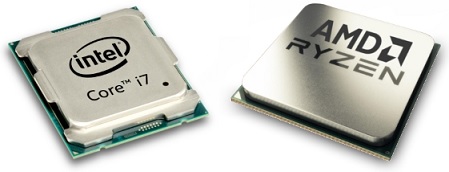
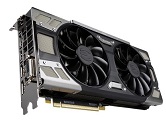
You can also overclock a graphics card to squeeze out more gaming performance, with best-case performance increases going up to 15-20% just like with processors. Again, if you don’t apply more voltage it’s quite safe as well.
To overclock a graphics card you’ll need software of which there are plenty of free options (explained later). Unlike a processor though, you can basically overclock any graphics card on the market. Some graphics cards, that include “OC” in the model number, are already overclocked by the manufacturer. Learn more with our full GPU overclocking guide.
3. RAM Overclocking
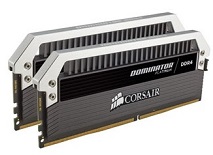
A common and oftentimes quite simple form of overclocking is memory/RAM overclocking. This involves manually setting the speed (MHz) of your RAM modules (from within the motherboard's BIOS software) to run at faster speeds, which can lead to faster performance in games and in other non-gaming applications.
These days it's actually often one of the necessary steps to do after building a PC, since for most people these days the RAM that you buy will actually be a faster speed than what the motherboard will default the RAM speed to. So in other words, when simply setting up your PC for the first time, you will likely be doing a quick memory overclock without even realizing it (don't worry, it's simply selecting a couple of settings, and much simpler than CPU overclocking).
If you buy a kit of 3000MHz or 3200MHz DDR4 memory for instance - a very common purchase for new builds these days - once installed DDR4 memory modules are often set to a speed of 2666MHz by the motherboard as default. So to get the 3000/3200MHz speed that you bought, you need to manually set that in the BIOS (explained here).
Memory overclocking can get more complicated though, such as pushing your RAM beyond its intended speed, and tinkering with more advanced settings other than the pure speed (MHz). For most users, you should avoid the advanced stuff as you will generally get diminishing returns from pushing your RAM beyond its intended settings, unless you know for certain the games/workflow of your choice greatly benefit from faster memory and you think it's worth the risk. As always, do your research if you're doing anything other than a basic (and necessary) memory overclock.
4. Monitor Overclocking
Yep, you heard that right. Overclocking your monitor is technically a thing too, and simply refers to forcing the refresh rate to a higher level than the official manufacturer setting. If you're out of the loop, the refresh rate is how many times per second a monitor is capable of updating the image on screen, with the standard being 60Hz which means you can see up to 60 frames per second (referred to simply as 60FPS).
Typically, unless you really know what you're doing and have done your research, you should generally avoid overclocking your monitor. It can cause issues such as losing the screen display altogether or cause screen tearing and jerkiness during gameplay. It could also damage the monitor irreversibly. You'd also potentially void your warranty.
Under the right circumstances it could work just fine though, especially if you're not jumping the refresh rate too much higher than its highest native setting (such as forcing a 60Hz screen to display at 75Hz for instance). But if you want a high refresh rate of 144Hz or higher and you have a 60Hz or 75Hz monitor at the moment, there's no real way around biting the bullet and buying a new gaming monitor that has a native 144Hz.
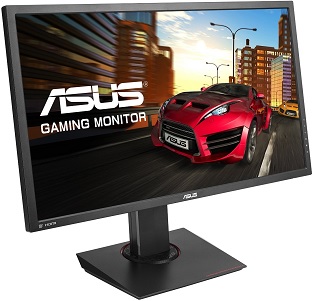 Forcing a higher refresh rate is generally not recommended, but possible depending on the model and how high you're going
Forcing a higher refresh rate is generally not recommended, but possible depending on the model and how high you're goingIs Overclocking Your Gaming PC Worth It?
So, to summarize, overclocking a modern PC is generally safe if you do your research beforehand, follow safety precautions, and don't push your luck too much. But whether it's worth it or not depends on the context. There's no right or wrong answer; overclocking can be a great way to boost performance for little to no added cost, but by the same token, it could also be a waste of time or a straight-up bad decision. Anyway, hope this introductory overview helped give you a general sense of what overclocking is, and check out the other more specific overclocking guides on the site if interested in learning more.
Related: How to Overclock Intel CPUs Without the BIOS
Trusted VPN
VPN software can be important in this day and age, especially if you do lots of online banking and/or use public WiFi whilst travelling. Having a VPN adds an extra layer of security to your PC or laptop when online to help protect your data, passwords, financials, etc from hackers or malicious programs. It can also let you access region-locked content (eg US Netflix from overseas). For gamers their can be even more benefits to using a VPN.
Because they're so popular these days, there are countless VPN providers, and it can be confusing to pick one. If you want my 2 cents, after a lot of research I decided on NordVPN 'cause it's one of the fastest, most reliable VPNs for both gaming and general use, with a lot of credible reviews out there backing that up. They also quite often run very solid deals.
Popular Articles (see all)
Search the Site
About the Author (2025 Update)
I'm an indie game developer currently very deep in development on my first public release, a highly-immersive VR spy shooter set in a realistic near-future releasing on Steam when it's ready. The game is partly inspired by some of my favorites of all time including Perfect Dark, MGS1 and 2, HL2, Splinter Cell, KOTOR, and Deus Ex (also movies like SW1-6, The Matrix, Bladerunner, and 5th Element).
Researching, writing, and periodically updating this site helps a little with self-funding the game as I earn a few dollars here and there from Amazon's affiliate program (if you click an Amazon link on this site and buy something, I get a tiny cut of the total sale, at no extra cost to you).
Hope the site helps save you money or frustration when building a PC, and if you want to support the countless hours gone into creating and fine-tuning the many guides and tutorials on the site, besides using my Amazon links if purchasing something, sharing an article on socials or Reddit does help and is much appreciated.

